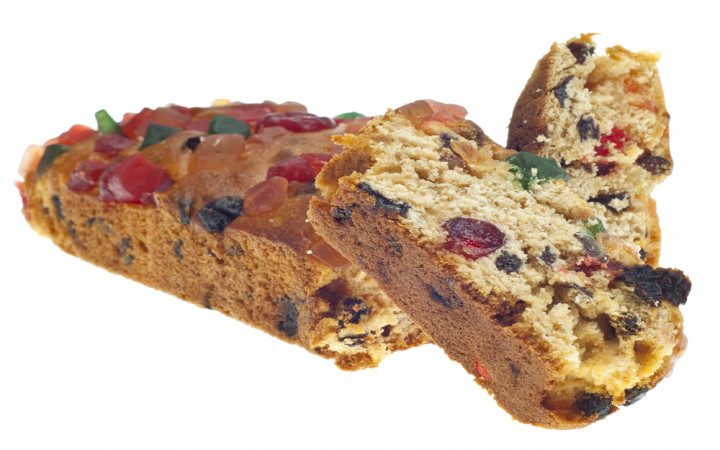Today’s Wonder of the Day was inspired by calie. calie Wonders, “what is fruitcake?” Thanks for WONDERing with us, calie!
Every year, the holiday season gives us the opportunity to revisit special traditions. Many of these traditions often revolve around food.
The winter holidays, in particular, are celebrated many times with a dense, sweet treat that some people love and some people hate. What are we talking about? The fruitcake, of course!
For some people, fruitcakes evoke memories of warm kitchens and the smell of spices in the air. Perhaps fruitcake was one of Grandma's specialties that you looked forward to every year.
For others, fruitcakes are nothing more than tasteless bricks that make better doorstops than edible treats. For these people, fruitcakes represent unwanted gifts that probably came from a factory kitchen rather than a homemade specialty.
Fruitcake is exactly what it sounds like: cake made with lots of chopped candied or dried fruit. Fruitcake also typically contains lots of nuts and spices.
Some historians believe that the ancient Egyptians would put an early version of the fruitcake in the tombs of loved ones. They believed they were providing food for the afterlife. Given the impressive shelf life of most fruitcakes, they may have been on to something.
Fruitcakes weren't very common, though, until ancient Romans began to mix pomegranate seeds, pine nuts, and raisins with mash to make ring-shaped cakes. These early fruitcakes were easy to carry and remained edible for a long time, which made them popular with Roman soldiers who traveled abroad to distant battlefields.
Over time, other ingredients, such as honey, spices and preserved fruits were added to fruitcakes. In the 16th century, the popularity of sugar led to the discovery that fruit could be preserved by soaking it in heavy concentrations of sugar.
This preserved fruit — called candied fruit — made fruit available year-round in places where it couldn't always be found. Candied fruit was imported in great quantities in the American colonies. With so much excess candied fruit, it was only natural to turn it into fruitcakes.
Fruitcakes layered with candied fruits and nuts were quite heavy and dense. A typical fruitcake might have contained citrus peel, pineapples, plums, dates, pears and cherries. Many fruitcakes had a density similar to that of mahogany wood!
Today, the average fruitcake weighs about two pounds. Although fruitcakes can certainly be delicious, they've declined in popularity over the years. They're still a holiday tradition in many areas, but you won't see them very often on restaurant menus or store shelves beyond the holiday season!




